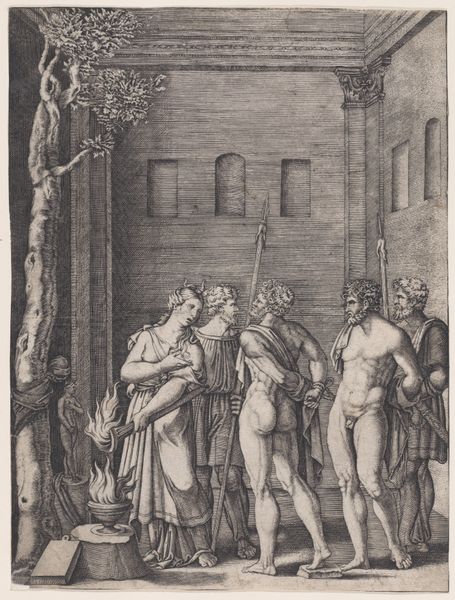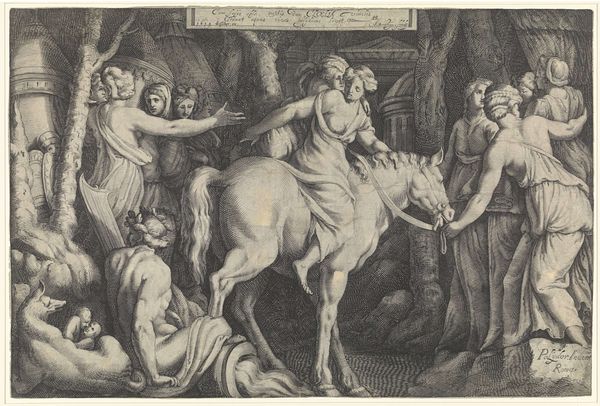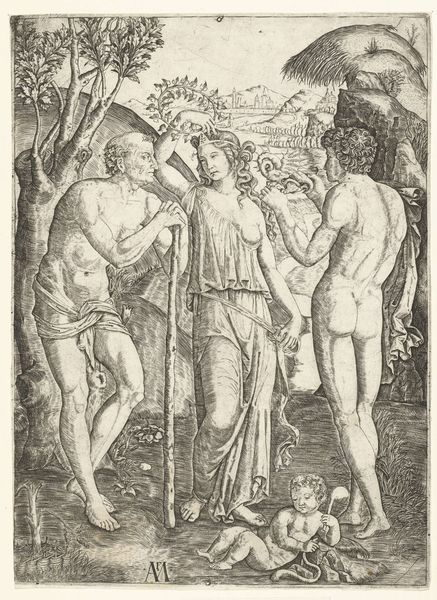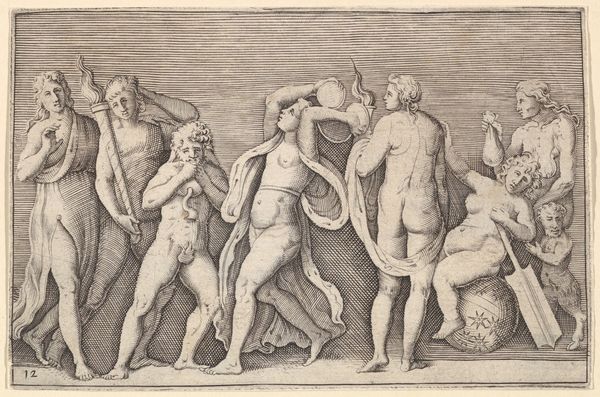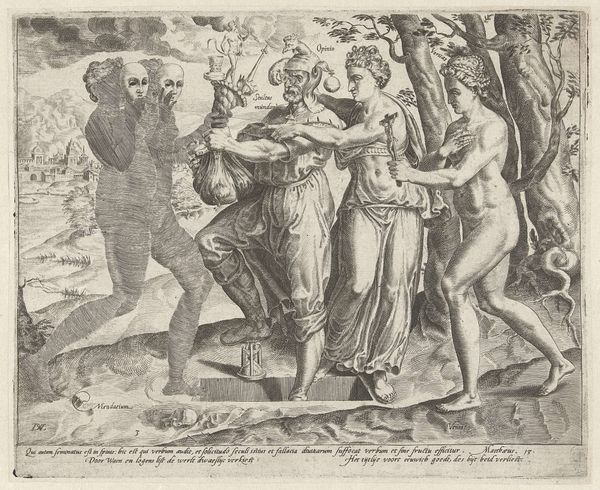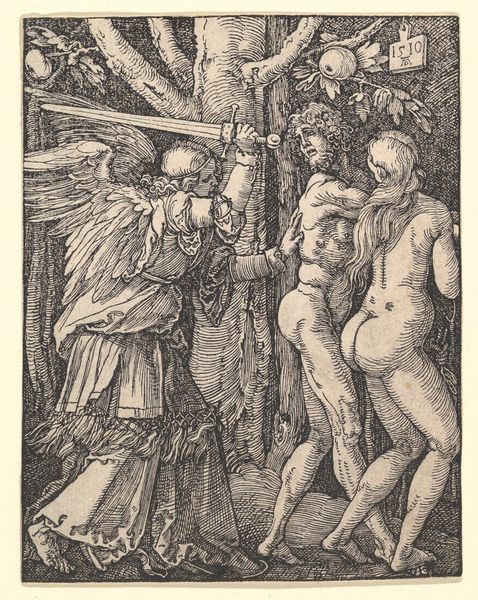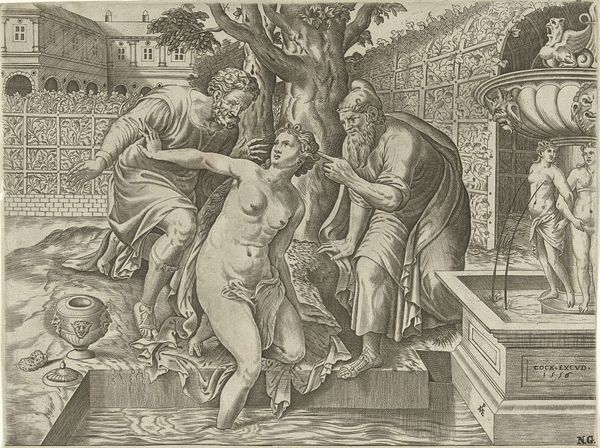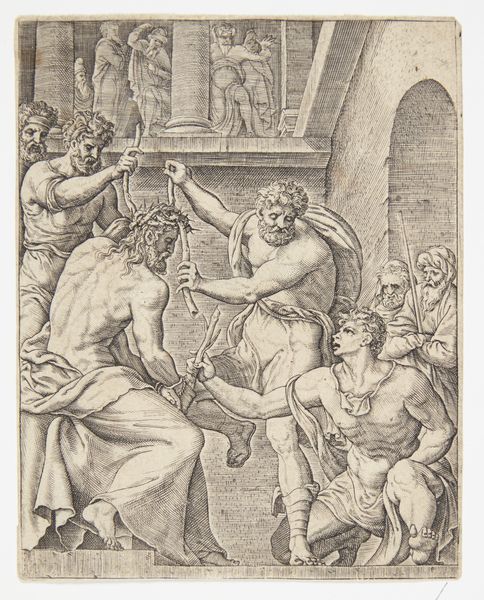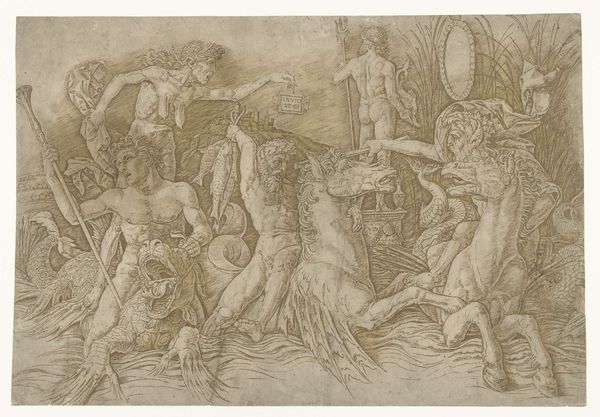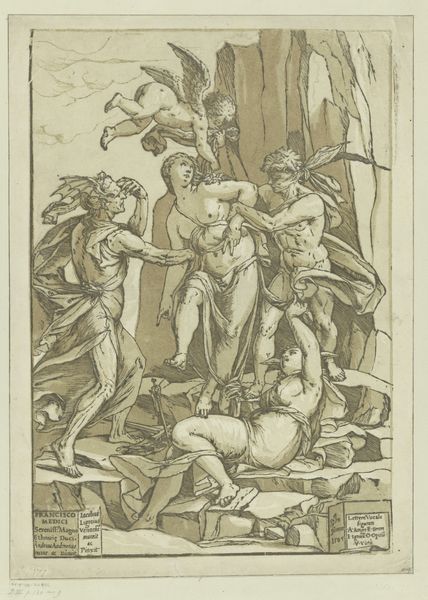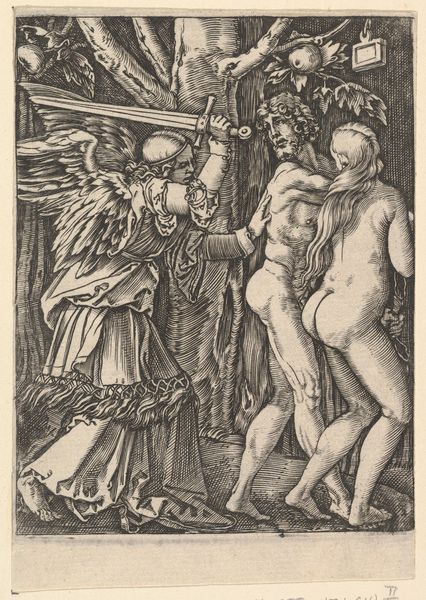
Bacchanaal met dronken Bacchus en saters en maeneaden 1510 - 1527
0:00
0:00
marcantonioraimondi
Rijksmuseum
print, engraving
#
allegory
# print
#
figuration
#
form
#
11_renaissance
#
line
#
history-painting
#
italian-renaissance
#
nude
#
engraving
Dimensions: height 149 mm, width 513 mm
Copyright: Rijks Museum: Open Domain
Editor: This engraving, "Bacchanaal met dronken Bacchus en saters en maeneaden," by Marcantonio Raimondi, dates from the 1510s or 20s. It's incredibly detailed, a wild scene! I'm curious about the context of its creation; what story do you think this print is trying to tell, especially considering its historical moment? Curator: That's a fantastic question. Remember, prints like these were crucial for disseminating artistic ideas across Europe. Raimondi, while a master engraver, wasn’t inventing the scene. This image echoes the revived interest in classical antiquity that was so important for the Italian Renaissance. We see a revelry dedicated to Bacchus, or Dionysus, but it's more than just drunken fun. It's also about exploring ideas of ecstasy, ritual, and even a kind of unbridled freedom—concepts that resonated powerfully, and often provocatively, with Renaissance audiences and artistic circles. Do you notice how the bodies are rendered? Editor: Absolutely, they seem very classical, idealized even. It is hard not to consider what this all signifies, if anything, for the artist himself, especially at that period. Curator: Precisely! It's unlikely Raimondi experienced a Bacchic revelry himself! What we are looking at here is largely mediated. Renaissance art was deeply enmeshed within circles of patronage, collecting and increasingly complex social stratification. Consider this print as a product created not from some authentic revelatory experience but instead as a knowing engagement, steeped within artistic tradition that circulated among elite audiences and helped in reinforcing their prestige, status and privilege. So, this seemingly “free” bacchanal reinforces rather conservative cultural patterns. Editor: That’s fascinating! So it’s less about personal expression and more about participating in, and perpetuating, a particular cultural narrative. That provides such a helpful perspective. Curator: Exactly. By understanding the socio-political forces at play, we move beyond simply admiring the technical skill and delve into the power dynamics that shaped even seemingly innocent images like this one. Editor: Thanks, that makes me think about it in a completely new light! Curator: Indeed, seeing art within its historical framework provides a richer understanding. It highlights the artist’s own world, the culture of patronage, the development of distribution of imagery to broader audiences and of course Renaissance's dialogue with classical ideals.
Comments
No comments
Be the first to comment and join the conversation on the ultimate creative platform.


